Kamut bread is a deeply flavorful and healthy loaf made from milled Kamut berries, an ancient grain largely untouched by modern processing methods and known for its digestibility, flavor, and nutrition.
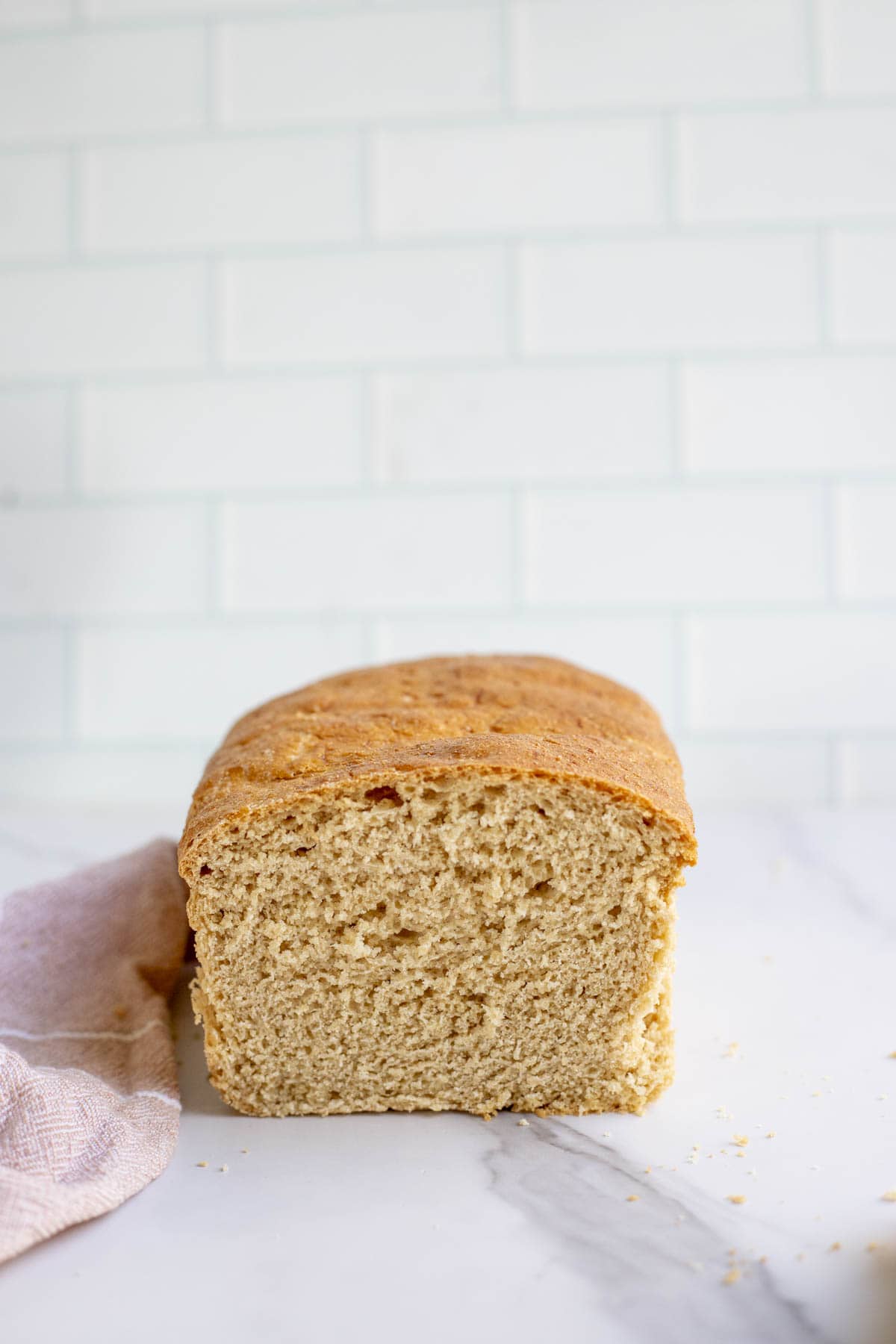
This Kamut bread recipe has minimal ingredients and is simple to prepare, yielding a delicious and versatile loaf of homemade bread with a buttery, rich flavor and a hint of sweetness.
With a soft, smooth, and close texture, it’s a tasty loaf that serves well for buttered toast, with bread dipping oil, as a hearty sandwich, or alongside a bowl of classic tomato soup to round out a meal.
It utilizes conventional yeast, which means it is easily made up in a single afternoon. After a thorough kneading to develop gluten structure, the dough undergoes a first rise, followed by shaping, then proofed a second time before being baked until golden.
I think it’s interesting that Kamut grain has a pretty yellow tone, resulting in a loaf that is more yellow than the usual whole wheat brown.
What is Kamut flour?
Kamut flour is not a new flour but rather the product of milled kamut berries, an ancient wheat variety – also known as Khorasan wheat. This type of wheat is less processed and more nutrient-dense than modern wheat.
While being a traditional grain, it is now far less common due to the mass production and commercialization of conventional wheat. Since it isn’t leading the grain market, it is also typically free of genetic engineering or modification and much more similar to the grains with which our ancestors were accustomed.
In much the same way that einkorn provides better nutrition and an earthy flavor in this easy einkorn sandwich bread, Kamut offers a higher nutritional content and a more wholesome profile while still being easy to work with.
It’s higher in protein and contains plenty of fiber, vitamins, and minerals without all the processing. It’s also easier to digest, though it’s important to note that Kamut flour still contains gluten, and those who are gluten-sensitive or have celiac disease should avoid it altogether.
While sourdough breads are still my favorite, whether a simple same-day sourdough loaf, an airy sourdough ciabatta, or a rich sourdough brioche, I love to use ancient grains for their strong nutritional foundations, especially when I’m not fermenting a recipe.
Why You’ll Love This Recipe
Delicious – Kamut flour bread offers a sweet, nutty flavor similar to your typical whole wheat. The texture is pleasantly chewy yet soft, making it a versatile option.
Simple – The process is hands-on, but it is also incredibly simple and quick. It’s an easy alternative to regular flour.
Nutritious – Kamut offers better digestibility than modern-day wheat due to its different gluten structure. It also has a high protein content and offers fiber, vitamins, minerals, amino acids, and antioxidants.
Ingredients
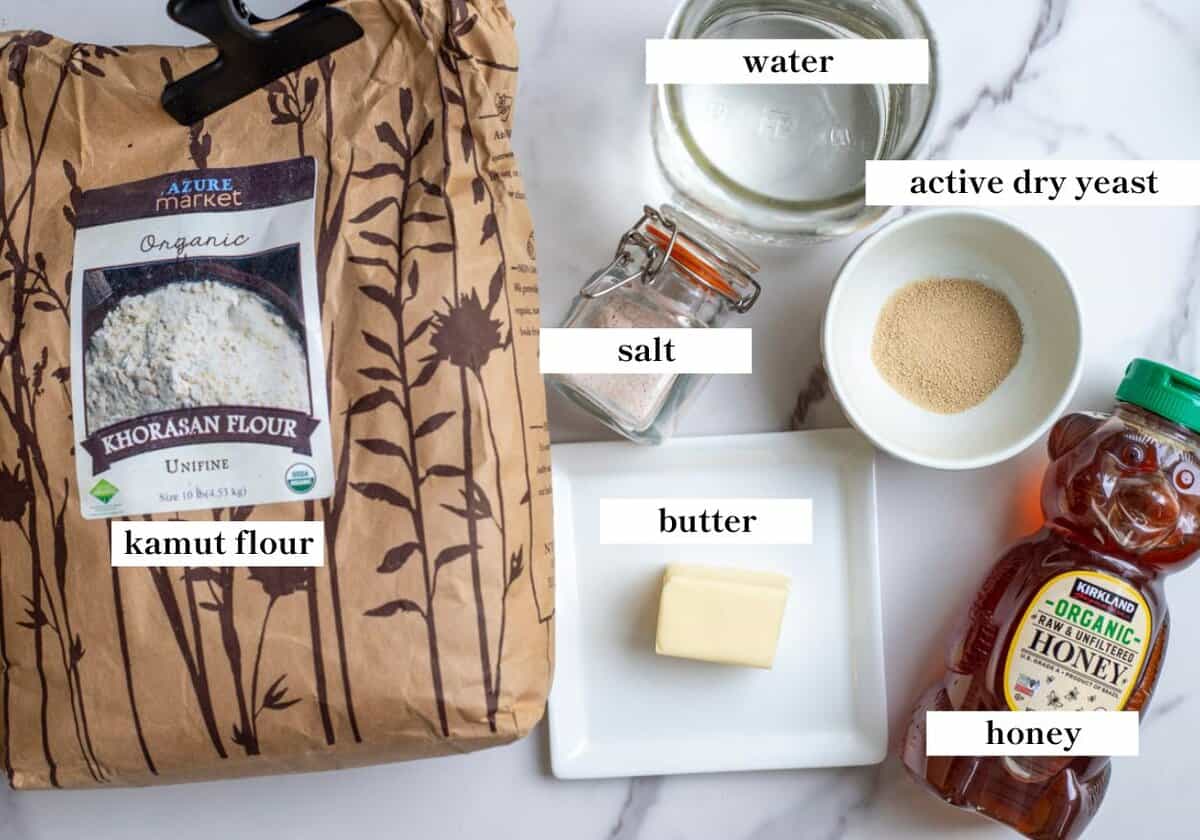
Kamut flour – I used unifine flour, which is milled ultra-fine, making it a great replacement for all-purpose or white flour. You can find Kamut flour on Amazon, through Azure Standard, or even shipped through Walmart.
A full ingredient list with exact amounts can be found in the recipe card below.
Tools You May Need
Grain mill – Optional, but if grinding kamut wheat berries, you’ll need a grain mill.
Stand mixer – This is also optional, but the dough hook makes the kneading process a breeze!
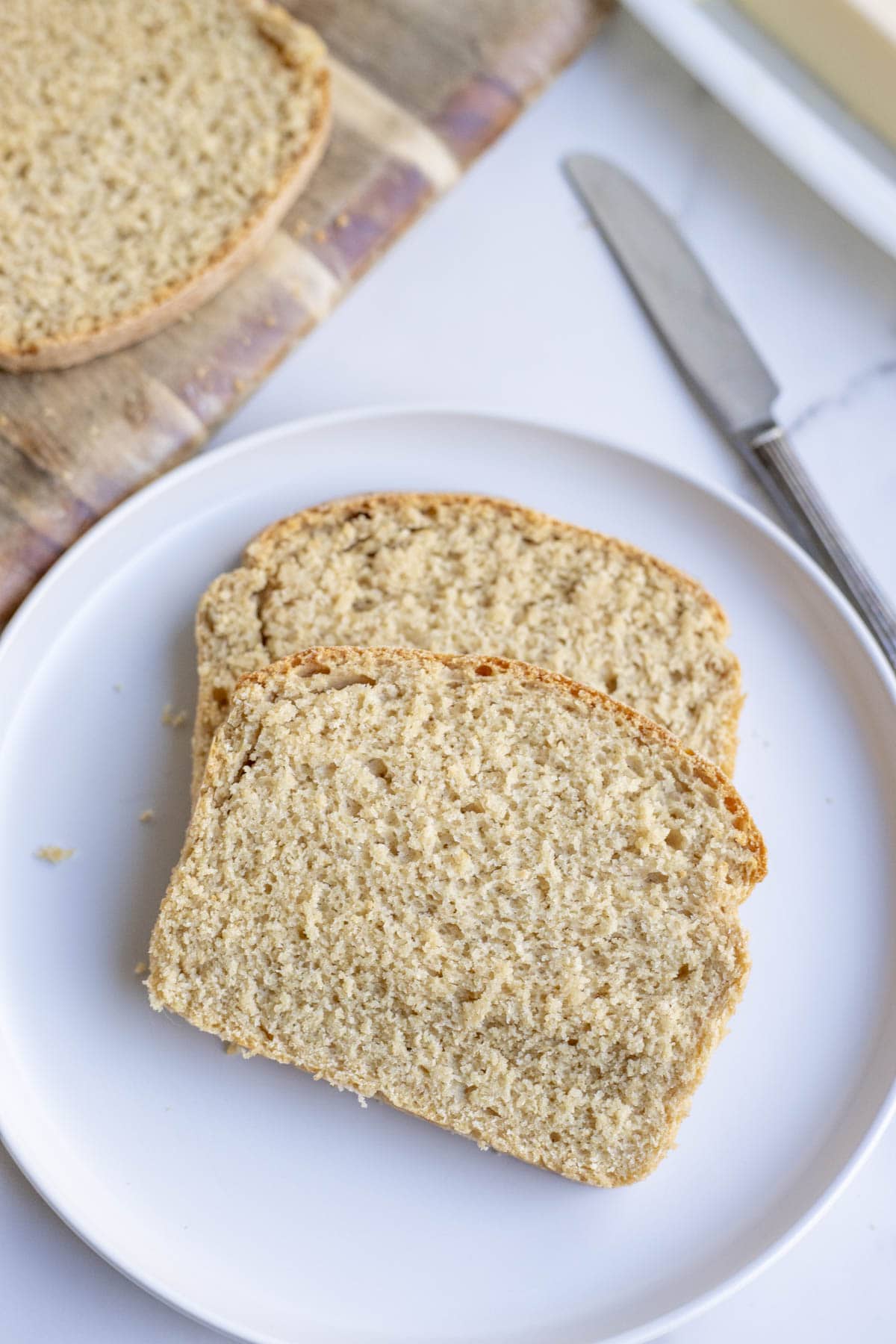
How to Make Kamut Bread
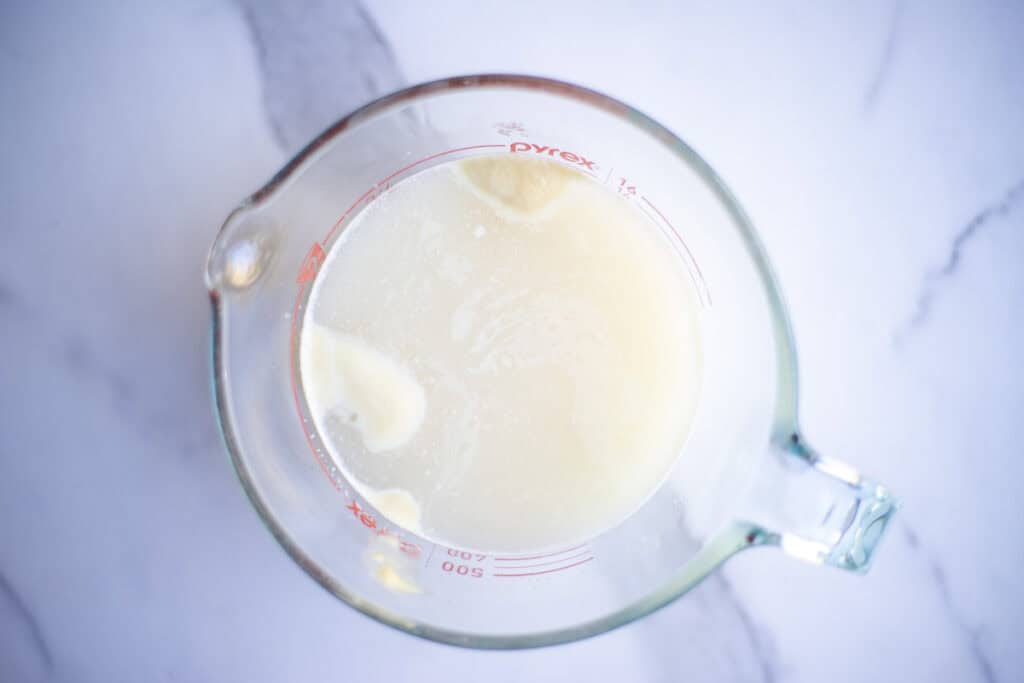
Step 1: In a large bowl or stand mixer with a dough hook, combine warm water, honey, and yeast. Let sit for several minutes until the yeast becomes foamy on top.
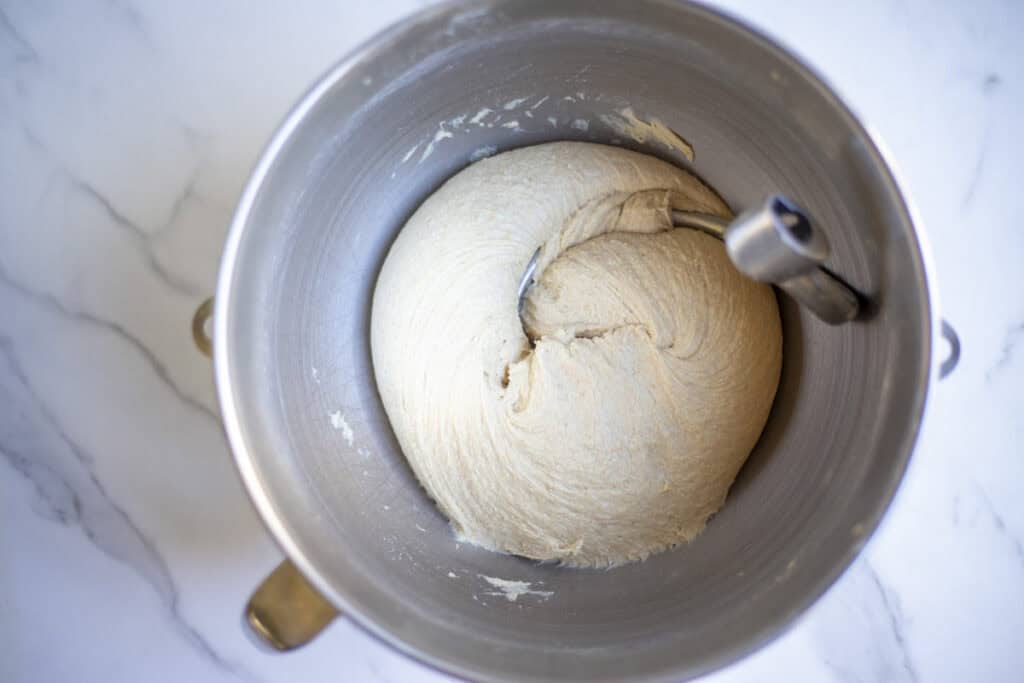
Step 2: Add melted, slightly cooled butter, flour, and salt, then mix well. Knead in the stand mixer for about 10-15 minutes until smooth and elastic. It will be ready when it starts pulling away from the sides of the bowl.
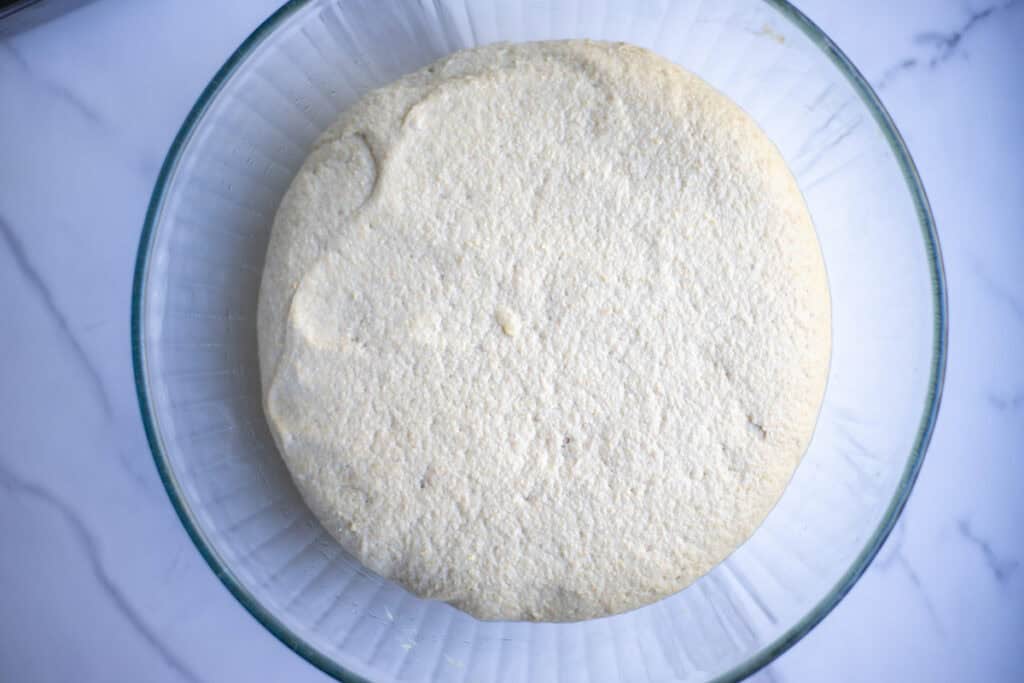
Step 3: Cover with an airtight lid or plastic wrap, then allow to rise for about one hour or until it doubles in size. The temperature of the room will affect the timing of the rise.
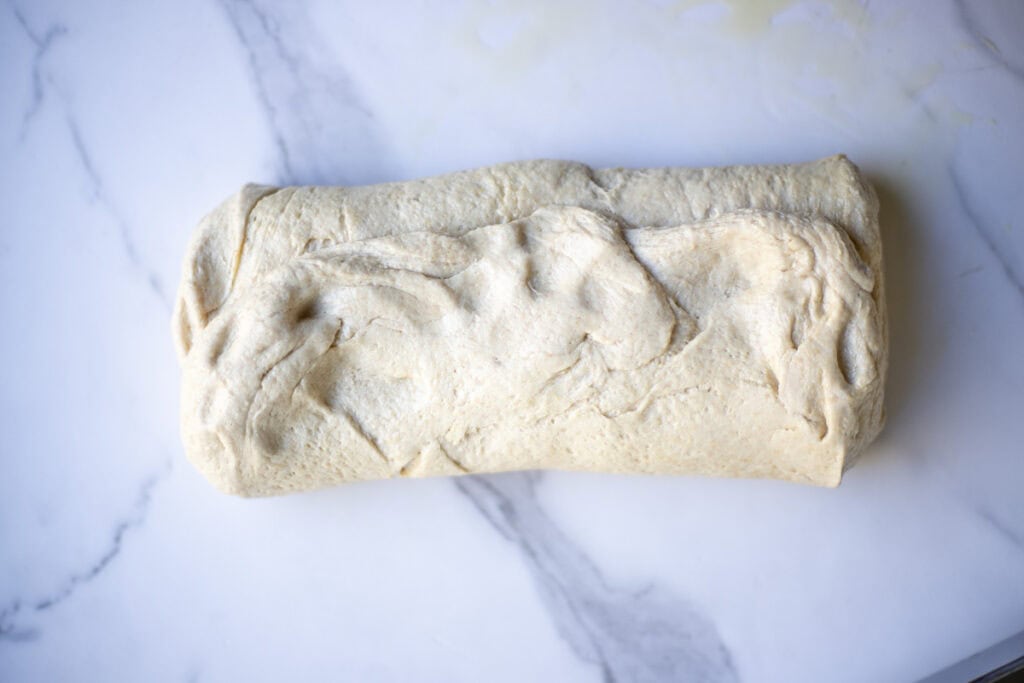
Step 4: Preheat oven to 375 degrees Fahrenheit and prepare loaf pan by greasing or lining with parchment paper. Shape the dough into a loaf by gently pressing it out into a loose rectangle on a lightly floured work surface, folding it into thirds like a letter, and then rolling it up.
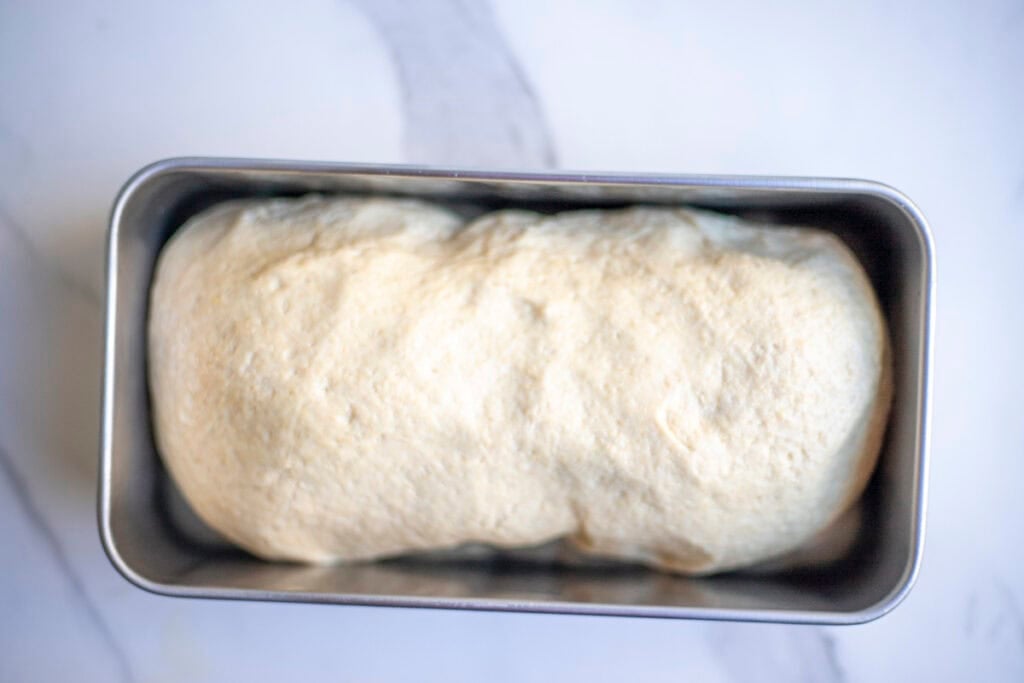
Step 5: Place into the prepared pan seam side down and cover with a damp tea towel.
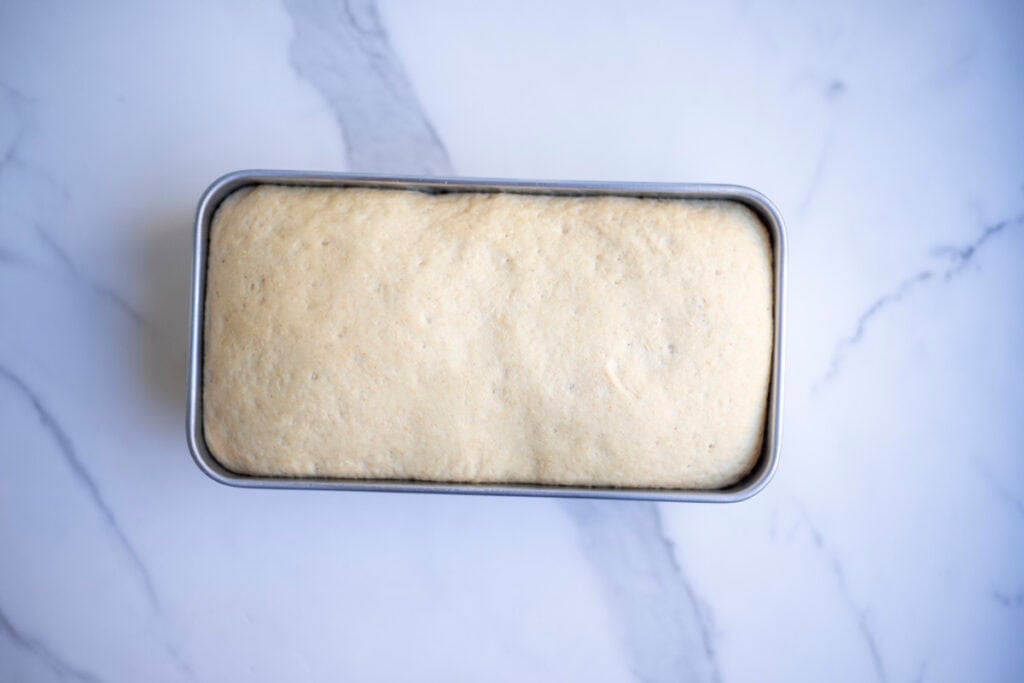
Step 6: Allow to rise for 30-60 minutes in a warm place or until doubled. Bake for 40-45 minutes until golden brown. Allow to cool completely on a wire rack before slicing.
Tips
- Because Kamut is lower in gluten, it will not pass the windowpane test. Knead until stretchy and pulling away from the sides.
- While the recipe is for straight Kamut flour, I also like substituting ½ cup of Kamut with whole wheat flour for the flavor and texture.
- You can knead by hand if you don’t have a stand mixer.
- Let the dough rest in a warm spot for a quicker rise. I often position mine near the fireplace or wood burner, but a sunny windowsill or on top of a preheating oven works well.
- Swap the melted butter for olive oil for a dairy-free version.
- For a crusty boule of Kamut bread, form it into a ball before the second rise, and rise on parchment paper until doubled. While the dough rises, preheat a Dutch oven to 500 degrees Fahrenheit. Place the boule – parchment paper and all – into the hot Dutch oven. Cover with the lid and bake for 20 minutes, then remove the lid and finish baking for about 10-15 minutes or until it has a golden brown crust. Let cool completely before slicing.
Recipe FAQs
It can be stored in an airtight bag or container at room temperature for up to a week. You can also wrap it well and store it in the freezer for up to 3 months, thawing at room temperature when ready to use.
Kamut flour contains higher amounts of gluten than regular wheat flour, but because the structure is different, it is known to be more easily digested. (source)
No, Kamut bread is risen with yeast, giving it a speedy rise. Sourdough is risen through the fermentation process.
Yes, you can. White Kamut flour is a good substitute for bread flour, though the dough will not be as stretchy due to its unique gluten structure.
Kamut flour absorbs more water than regular flour, so it can be swapped 3/4 cup of Kamut to one cup of all-purpose.
More Bread Recipes from the Farmhouse
- Pain de Mie (Pullman Bread)
- Easy Sourdough Italian Bread
- Sourdough Discard Sandwich Bread
- Sourdough Rye Bread
- Gluten-Free Sourdough Bread
If you try this recipe and love it, I would love it if you could come back and give it 5 stars! Tag me on Instagram @farmhouseonboone.
Kamut Bread
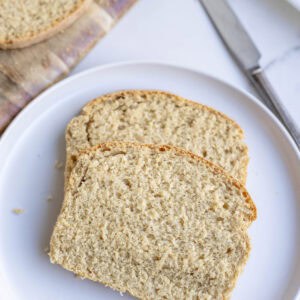
Equipment
Ingredients
- 1 ¾ cup warm water, 413 grams
- 2 tablespoons honey, 42 grams
- 2 teaspoons dry active yeast, 6 grams
- 3 tablespoons melted butter, 42 grams
- 3 ½ cups kamut flour, 420 grams
- ¼ teaspoon sea salt, 1.25 grams
Instructions
- In a large bowl or stand mixer with a dough hook, combine warm water, honey, and yeast. Let sit for several minutes until the yeast becomes foamy on top.
- Add melted, slightly cooled butter, flour, and salt, then mix well. Knead in the stand mixer for about 10-15 minutes until smooth and elastic. It will be ready when it starts pulling away from the sides of the bowl.
- Cover with an airtight lid or plastic wrap, then allow to rise for about one hour or until it doubles in size. The temperature of the room will affect the timing of the rise.
- Preheat oven to 375 degrees Fahrenheit and prepare loaf pan by greasing or lining with parchment paper. Shape the dough into a loaf by gently pressing it out into a loose rectangle on a lightly floured work surface, folding it into thirds like a letter, and then rolling it up.
- Place into the prepared pan with the seam side down and cover with a damp tea towel. Allow to rise for 30-60 minutes in a warm place or until doubled.
- Bake for 40-45 minutes until golden brown. Allow to cool completely on a wire rack before slicing.
Notes
- Because kamut is lower in gluten, it will not pass the windowpane test. Knead until stretchy and pulling away from the sides.
- While the recipe is for straight Kamut flour, I also like substituting ½ cup of Kamut with whole wheat flour for the flavor and texture.
- You can knead by hand if you don’t have a stand mixer.
- Let the dough rest in a warm spot for a quicker rise. I often position mine near the fireplace or wood burner, but a sunny windowsill or on top of a preheating oven works well.
- Swap the melted butter for olive oil for a dairy-free version.
- For a crusty boule of Kamut bread, form it into a ball before the second rise, and rise on parchment paper until doubled. While the dough rises, preheat a Dutch oven to 500 degrees Fahrenheit. Place the boule – parchment paper and all – into the hot Dutch oven. Cover with the lid and bake for 20 minutes, then remove the lid and finish baking for about 10-15 minutes or until it has a golden brown crust. Let cool completely before slicing.
Nutrition
Nutrition information is automatically calculated, so should only be used as an approximation.
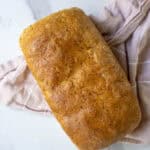
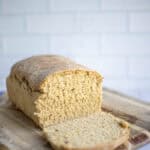
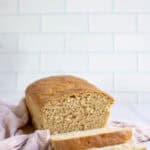

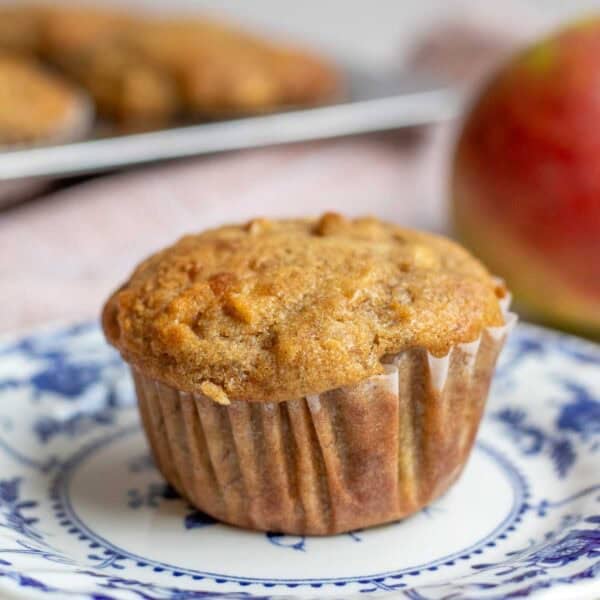
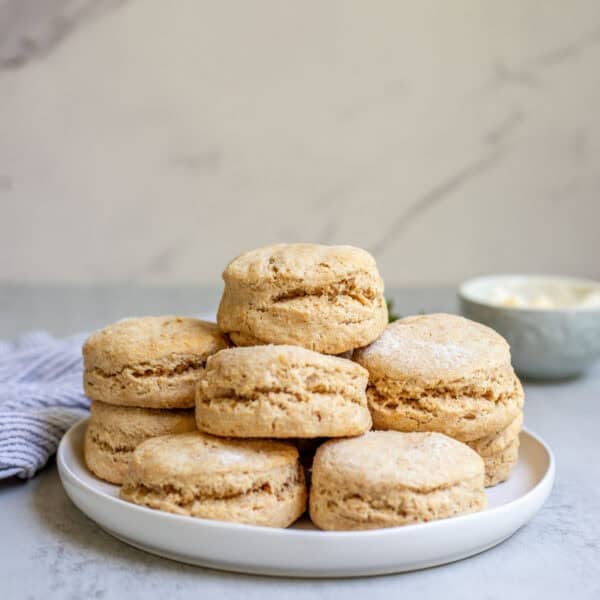







Hi Lisa,
I am wanting to know if I can hand mix this dough and do stretch and folds to attain the same gluten structure opposed to using a mixer for 15 min. If stretch and folds would work then could you give me an idea of what that looks like time wise because I am dealing with dry yeast. Thanks so much!
I multiplied by 3 for the recipe and wound up using 16 cups of flour. if I were to use this recipe again, I would cut the water back to 4 cups .
Sorry I didn’t see the comment about size.
What size loaf pan?
I just ordered Kamut berries from Azure can not wait to try this recipe. What size bread pans did you use? I make spelt bread and use 2 glass 9×5 pans would this work?
Yes, that is about the size of mine. I think mine are 9.5×5.5. Very close!
Thank you Linda 😊
I just made a second batch of Kamut bread 50/50 fresh milled kamut and bread flour. I am going to try this recipe this week some time I REALLY want 100% kamut. I might sub 1/2 cup of kamut with fresh milled spelt.
Thank you for the recipe
God Bless.
Thank you for the ancient grain recipes. I have some difficulty with them turning out too dense
This is one of the more interesting breads I’ve made as a beginning baker. I like the mild “buttery” flavor this grain has, but that is probably also because the recipe includes butter. I ate it with Crofters Premium Strawberry Spread (no need to add extra butter) and also with “ham off the bone” and havarti cheese from the service deli. Would make a party platter so your guests can try something new. I’d also like to see someone use the brand of flour suggested ìn the recipe which is made by an impact mill to achieve a fine texture like bread flour. Also the crusty boule method. I used Dove khorasan flour.
I followed this recipe but used (2) 8×4 bread pans instead and used a scale to measure out the dough evenly into each pan. I baked for 18 minutes and the loaves were perfect! So soft and yummy! I love Kamut flour! My kids devoured it!
I tried to find Kamut berries on Azure, but there was only flour. Rancidity/deterioration is a concern with buying the flour, isn’t it?
Hi Kimberly I used Dove khorasan flour and it came out pretty good. Once you start milling berries it tastes fresher but things start getting more picky. They say the hull fragments can cut into the dough’s gluten development. Good luck.
Ron
I bought a big bag of Kamut berries from Azure in early June. Maybe they were just out at the time. Try checking again.
Kimberly, if you are so looking for kamut berries, I was able to find them on Amazon. I think I got the Bob’s Red Mill whole kamut berries. I have found kamut berries with Azure, but they only sell them in large bags and I wanted to experiment in smaller quantities so I went with Amazon. Made my first kamut loaf of bread last night and the flavor and texture were great, but I didn’t get much rise. Hope this helps you to find some kamut berries!
Lisa, I’ve been following you for quite a while, so I must ask, why don’t you make this recipe using sourdough? Thanks, Diane
I was wondering if I could add some discard to it too and cut some of the water and flour requirements.